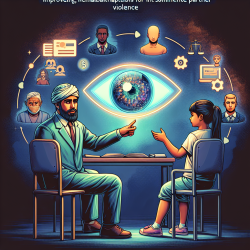Introduction
Progressive Supranuclear Palsy (PSP) is a complex neurodegenerative disorder that manifests in different clinical variants, notably Richardson's syndrome (PSP-RS) and the speech-language variant (PSP-SL). Recent research has leveraged diffusion tractography to examine the superior cerebellar peduncle (SCP) and dentatorubrothalamic tracts (DRTT) in these variants, offering new insights into their distinct pathologies. This blog explores the implications of these findings for speech-language pathologists and encourages further research to enhance therapeutic outcomes.
Understanding the Research
The study titled "Diffusion tractography of superior cerebellar peduncle and dentatorubrothalamic tracts in two autopsy confirmed progressive supranuclear palsy variants: Richardson syndrome and the speech-language variant" provides a detailed examination of how diffusion tractography can differentiate between PSP-RS and PSP-SL. The research involved 22 autopsy-confirmed PSP patients, with 12 diagnosed with PSP-RS and 10 with PSP-SL. These groups were compared to controls, including patients with Alzheimer’s disease with logopenic progressive aphasia (AD-LPA) and healthy individuals.
Key Findings
- Both PSP-RS and PSP-SL showed degeneration in the SCP and DRTT, but the extent and nature of this degeneration differed between the variants.
- PSP-RS exhibited greater degeneration in the SCP and DRTT, with significant correlations between ocular motor impairment and SCP integrity.
- PSP-SL showed more pronounced abnormalities in the frontal aslant tract and superior longitudinal fasciculus, which are associated with speech and language functions.
- Distinct patterns of structural connectivity were observed, with PSP-RS showing more disruption in infratentorial regions and PSP-SL in supratentorial regions.
Implications for Practice
For practitioners in speech-language pathology, these findings underscore the importance of tailoring interventions based on the specific neurodegenerative patterns observed in PSP variants. Understanding the distinct tractography profiles can guide more precise therapeutic strategies, particularly in addressing speech and language deficits in PSP-SL.
Moreover, the study highlights the potential of diffusion tractography as a diagnostic tool, aiding in the differentiation of PSP variants and informing prognosis. This could lead to earlier and more accurate diagnoses, allowing for timely intervention and potentially better outcomes for patients.
Encouraging Further Research
While the current study provides valuable insights, it also opens avenues for further research. Future studies could explore the application of advanced imaging techniques to refine our understanding of PSP pathology. Additionally, investigating the longitudinal impact of therapeutic interventions on tract integrity could provide evidence for the efficacy of specific treatment approaches.
Practitioners are encouraged to collaborate with researchers to explore these possibilities, contributing to a growing body of knowledge that can enhance clinical practice and improve patient outcomes.
Conclusion
The integration of diffusion tractography into the study of PSP variants offers promising avenues for advancing our understanding and treatment of this complex disorder. By aligning research insights with clinical practice, speech-language pathologists can play a pivotal role in enhancing the quality of life for individuals affected by PSP.
To read the original research paper, please follow this link: Diffusion tractography of superior cerebellar peduncle and dentatorubrothalamic tracts in two autopsy confirmed progressive supranuclear palsy variants: Richardson syndrome and the speech-language variant.










